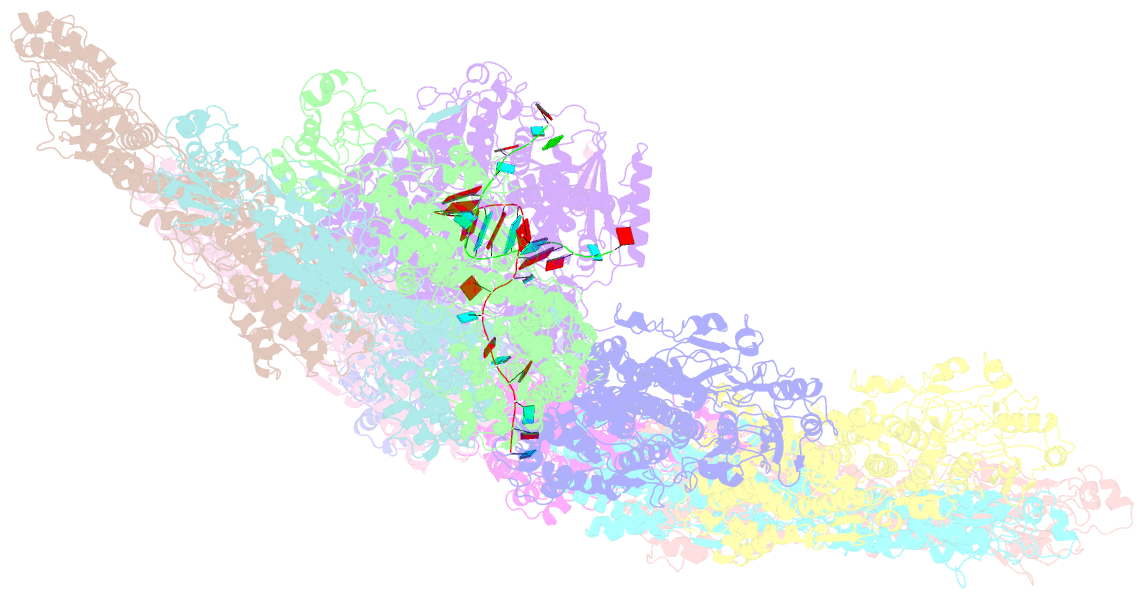Summary information and primary citation
- PDB-id
- 6ogz; SNAP-derived features in text and JSON formats;
DNAproDB
- Class
- viral protein-RNA-transferase
- Method
- cryo-EM (3.6 Å)
- Summary
- In situ structure of rotavirus RNA-dependent RNA polymerase at transcript-elongated state
- Reference
- Ding K, Celma CC, Zhang X, Chang T, Shen W, Atanasov I, Roy P, Zhou ZH (2019): "In situ structures of rotavirus polymerase in action and mechanism of mRNA transcription and release." Nat Commun, 10, 2216. doi: 10.1038/s41467-019-10236-7.
- Abstract
- Transcribing and replicating a double-stranded genome require protein modules to unwind, transcribe/replicate nucleic acid substrates, and release products. Here we present in situ cryo-electron microscopy structures of rotavirus dsRNA-dependent RNA polymerase (RdRp) in two states pertaining to transcription. In addition to the previously discovered universal "hand-shaped" polymerase core domain shared by DNA polymerases and telomerases, our results show the function of N- and C-terminal domains of RdRp: the former opens the genome duplex to isolate the template strand; the latter splits the emerging template-transcript hybrid, guides genome reannealing to form a transcription bubble, and opens a capsid shell protein (CSP) to release the transcript. These two "helicase" domains also extensively interact with CSP, which has a switchable N-terminal helix that, like cellular transcriptional factors, either inhibits or promotes RdRp activity. The in situ structures of RdRp, CSP, and RNA in action inform mechanisms of not only transcription, but also replication.





